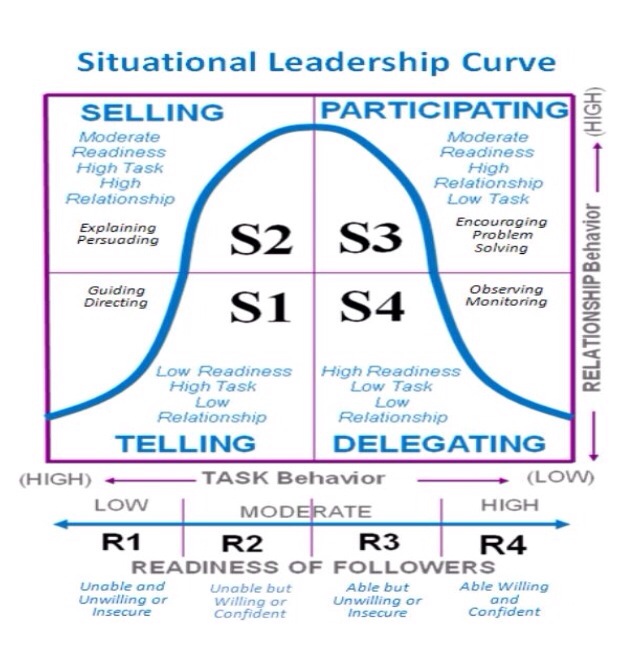Your son has come to you with his holiday homework during vacation. You go through it and set his time table and lay down your expectations. After two weeks, you check on his progress and find that he hasn’t gone past even one topic. He said he didn’t understand what they were asking and was afraid to ask for help. Although you may want to blame your son, the truth is that you’re as much to blame as he is.
How could you have prevented this?
These types of situations occur because you, as a leader, don’t use a style of leadership that fits the readiness of the person for that work at that time. When these don’t match, it is bound to lead to failures.
Here, we’ll review the Hersey-Blanchard Situational Leadership Theory, and we’ll explain how it’s used in different leadership situations. Situational leadership says that a manager or person of authority should adapt their styles of leadership based upon the situation and the readiness of their people.
This theory has been developed by Dr. Paul Hersey, a professor and author of “The Situational Leader”, and Ken Blanchard, the author of the “One-Minute Manager.”
The theory states that successful leaders should change their leadership styles based on the readiness of the people they’re leading and the details of the task. Depending upon performance readiness level of the follower (combination of ability and willingness) to perform a specific task, the manager/leader needs to determine the appropriate level and style of leadership that is needed to complete the work.
If your employee/child isn’t lacks knowledge or capability to handle the task, then you need to spend more time on explaining what needs to be done and how.
If he or she has the knowledge and capability to perform the task, then you need to spend more time building the relationship and trusting that it will be completed satisfactorily.
Hersey and Blanchard came up with four readiness levels and styles of leadership based upon the situational leadership theories. Each level works well with the other. They developed four leadership styles (S1 to S4) that match the readiness levels (R1 to R4) of the followers.
Readiness Levels
According to Hersey and Blanchard, knowing when to use each style is largely dependent on the readiness of the person or group one is leading. The four different readiness levels are:
• R1 – People at this level of readiness lack the knowledge, skills, or confidence to work on their own, and they often need to be pushed to take the task on. They are unable and unwilling.
• R2 – at this level, people might be willing to work on the task, but they still don’t have the skills to complete it successfully. The person is, therefore, unable but willing or motivated.
• R3 – Here, people are ready to perform the task. They will be called able but unwilling or insecure.
• R4 – These people are able to work on their own. They have high confidence and strong skills, and they’re committed to the task. They are, therefore, able and willing or motivated
Leadership Styles
According to Hersey and Blanchard, the four main leadership styles are:
• Telling (S1) – Leaders tell their people what to do and how to do it.
• Selling (S2) – Leaders provide information and direction, but there’s more communication with followers. Leaders use explaining and persuading skills to get the task completed
• Participating (S3) – Leaders focus more on the relationship and less on direction. The leader focuses on encouraging his people and collaborative problem solving approach.
• Delegating (S4) – Leaders give most of the responsibility onto the follower or group. The leaders focus on monitoring and observing the group.
The above concept can be understood more clearly from the diagram depicted below. Styles S1 and S2 (correspond to readiness level R1 and R2) are focused on getting the task done. Styles S3 and S4(for readiness level R3 and R4) are more concerned with developing team members’ abilities to work independently.



Good effort…
keep it up…